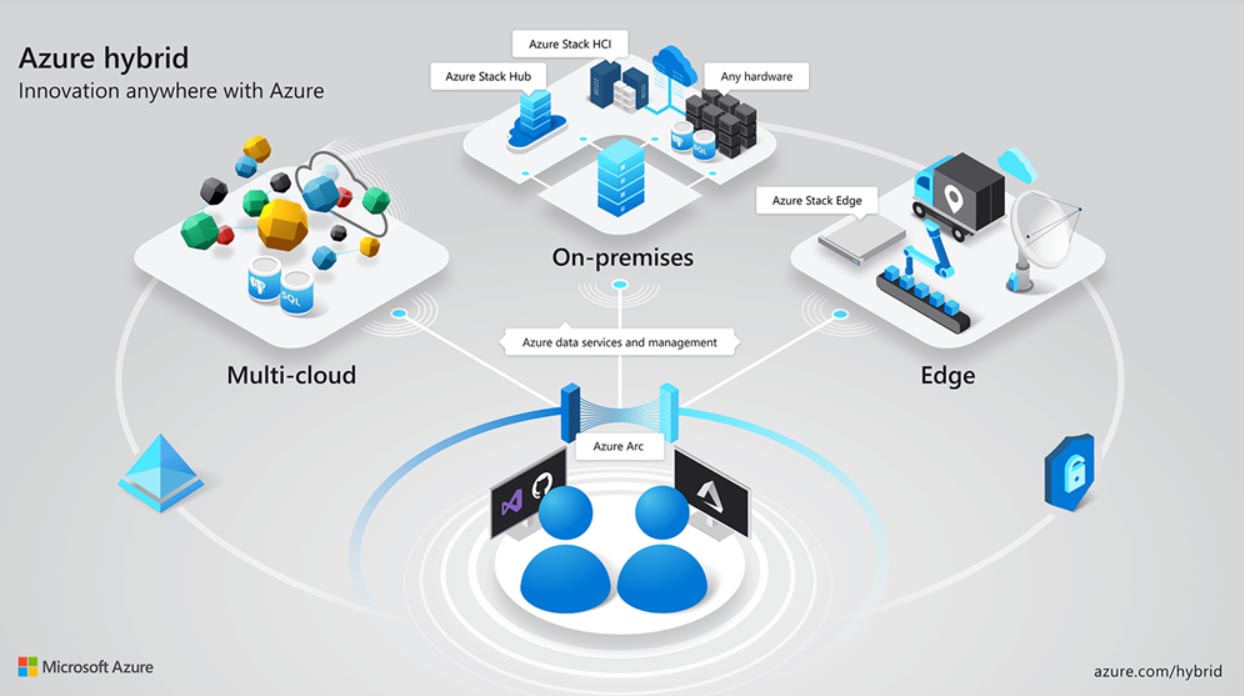
There has been a great hype for cloud solutions and services, but the year 2020 will bring a huge shift for on premise servers, which persist in 98% of businesses, as the cloud services have been found to be very expensive. As per our analysis, this will lead to the growth of sales in the server, storage and other related products as far as the data centre infrastructure is concerned.
After a strong performance in 2018, this market segment witnessed several ups and downs, creating a fluctuation for IT infrastructure vendors in 2019. The demand for cloud computing solutions witnessed several ups and downs throughout 2019. After a decline in the revenues of the second quarter of 2019, spending on cloud IT infrastructure rose in the third quarter.
On-premise IT infrastructure, despite some limitations, still hold value. These systems were typically custom-built to serve the purpose of a particular business. For some companies, it can be daunting to consider migrating to the cloud and moving their data from the servers in the basement to a data centre.
The cloud market will grow 17 per cent in 2020 to total $266.4 billion, up from $227.8 billion in 2019. The industry will be worth $354.6 billion by 2022 with several large and small businesses turning to cloud solutions, as per Gartner.
The trend of companies investing on cloud products is also likely to get better, predicts International Data Corporation (IDC) and the worldwide spending on security products and services will enjoy solid growth over the next five years as organizations continue to invest in solutions to meet a wide range of security threats and requirements.
Even though a new technology might be the buzzword of the moment, the traditional technology will never really go away.
One way of making a graceful migration is to take advantage of the hybrid model. The hybrid cloud is now estimated to be a $1.2 trillion opportunity. This way it is possible to migrate parts of your IT-infrastructure to the cloud while keeping the more sensitive parts on your own servers and the company's more sensitive data at risk by putting data into the cloud. However, on a later date, one can move more parts of the IT-infrastructure to the cloud.
The momentum will accelerate further in 2020 as businesses in all sectors will use hybrid multi-cloud strategies to rapidly roll out applications that accelerate the digital transformation of their businesses while delivering exceptional experiences to their customers. At the same time, enterprises will increasingly turn to advanced encryption and protection solutions to ensure that their clouds remain secure in today’s threat-rich environment, and they will embrace emerging technologies like edge to extend the reach of their capabilities.
One-third of organizations buy new servers because of the end of life for a server’s operating system. IT decision makers have a number of motives for keeping hardware infrastructure and purchase new infrastructure dependent on refresh cycles. Moreover, Small-and-medium-sized businesses work on the same servers until the hardware fails or reliability concerns motivate new purchases.
As an early adopter, Microsoft has decided to bring Azure Services on-premises with Microsoft Azure Stack. In January 2020, Microsoft is dropping extended support for the popular Windows Server 2008, while support for SQL Server 2008 ends in July.

Enterprises rely on a hybrid technology approach to take advantage of their on-premises investment and at the same time utilize cloud innovation. As more business operations and applications expand to include edge devices and multiple clouds, hybrid capabilities must enable apps to run seamlessly across on-premises, multi-cloud, and edge devices, while providing consistent management and security across all distributed locations. Without coherence across these environments, cost and complexity grow exponentially. Microsoft understands that hybrid cloud capabilities must evolve to enable innovation anywhere, while providing a seamless development, deployment and ongoing management experience.
Since its origin, Azure has been built to enable seamless hybrid capabilities – and it continues to deliver on customers’ needs to enable purposeful innovation. Two years ago, Microsoft delivered Azure Stack to enable a consistent cloud model, deployable on-premises. Over the past year, it has extended Azure to provide DevOps for any environment and any cloud; it enabled cloud-powered security threat protection for any infrastructure, and unlocked the ability to run Microsoft Azure Cognitive Services AI models anywhere. Today, Microsoft takes a significant leap forward to enable customers to move from just hybrid cloud to truly deliver innovation anywhere with Azure.
The reality is that moving to the cloud introduces many more advantages than disadvantages, by providing better security, scalability, and therefore stability. The single biggest benefit of cloud solutions is that you as a company don't have to maintain the service yourself. The cloud solution providers focus on their core business, like the big real estate companies by giving the facility required for the technology to run smoothly and to ensure that their cloud-based service runs stable and securely for the companies using it.
Edge computing is where computations are performed as close to where the data is generated as possible. Retailers will benefit from faster updates on consumer buying trends, factories will be able to perform predictive maintenance on equipment that’s about to fail, cell phone carriers will be able to support mobile gaming and augmented reality. It is going to be more secure.
See What’s Next in Tech With the Fast Forward Newsletter
Tweets From @varindiamag
Nothing to see here - yet
When they Tweet, their Tweets will show up here.





























